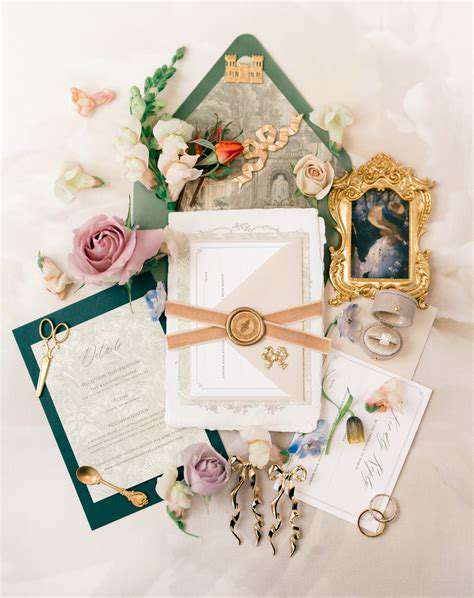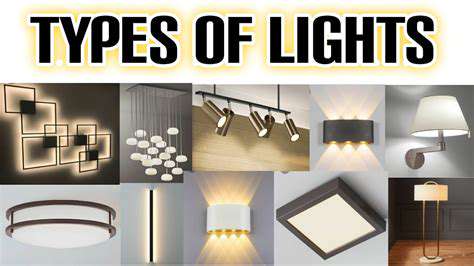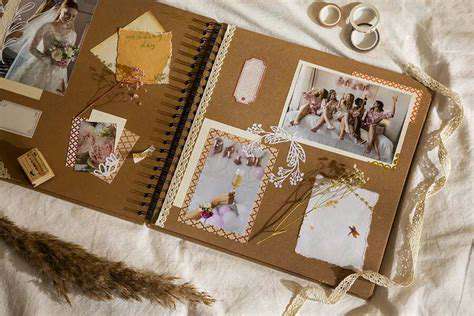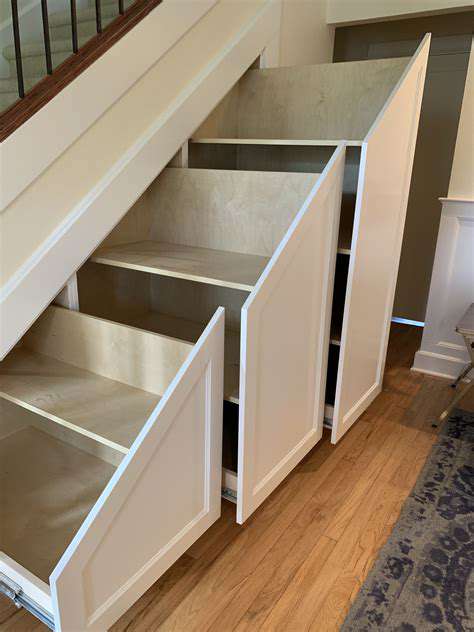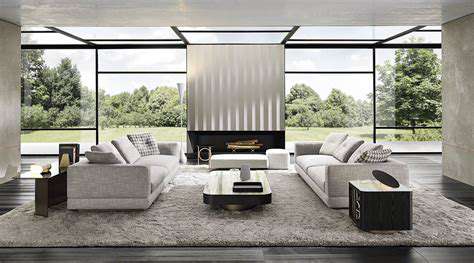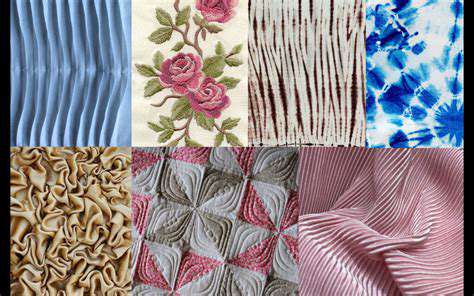How to Enhance Home Aesthetics with Soft Furnishing
When we think about transforming a house into a home, few elements make as immediate an impact as carefully selected soft furnishings. These tactile additions - from plush cushions to flowing curtains - don't just decorate a space; they breathe life into it. The right combination of textures and colors can completely redefine a room's character, turning sterile areas into welcoming retreats that invite relaxation.
Beyond their visual appeal, these textile elements serve practical purposes often overlooked. A well-placed rug doesn't just look beautiful - it absorbs sound, provides warmth underfoot, and defines living spaces. Similarly, strategically draped throws offer more than decoration; they provide actual comfort during chilly evenings, proving that good design marries form with function.
Curtains and Draperies: Crafting Atmosphere and Privacy
Window treatments represent one of the most transformative elements in interior design. The right drapery can turn harsh sunlight into a soft glow, create the illusion of higher ceilings, or make small windows appear grand. Fabric choice matters tremendously here - lightweight linens create an airy feel perfect for sunrooms, while velvet panels lend formal spaces an air of opulence.
Cushions and Pillows: Adding Texture and Personality
These small accents pack a powerful design punch. A thoughtfully arranged collection of pillows can make even basic furniture look custom-designed, while allowing for easy seasonal updates. The beauty lies in their versatility - mix vintage needlepoint with modern geometric prints, or pair nubby linen covers with smooth silk shams for intriguing contrast.
Beyond aesthetics, pillows serve ergonomic purposes too. Proper lumbar support transforms a stylish sofa into genuinely comfortable seating, proving that good design considers both beauty and bodily needs.
Throws and Blankets: Adding Warmth and Visual Interest
Nothing says curl up and stay awhile like a beautifully draped throw. These functional accessories add instant coziness while providing opportunities to introduce new colors or textures. A chunky knit throw brings rustic charm, while a sleek faux fur adds glamour - the options are limitless. Draped artfully over a chair arm or folded neatly at the foot of a bed, they signal that a space is meant for relaxation.
Rugs: Grounding the Space and Defining Zones
Floor coverings serve as the foundation of room design, both literally and figuratively. The right rug can visually unify furniture groupings, create intimate conversation areas in large rooms, or add needed warmth to spaces with hard flooring. Consider layering rugs for added dimension - perhaps a natural fiber base with a colorful vintage kilim on top for eclectic charm.
Textiles: Uniting the Design Elements
The magic happens when all these textile elements work in harmony. Repeating colors from drapery in throw pillows, or echoing a rug's pattern in upholstery fabric, creates a pulled-together look. Texture mixing adds depth - pair nubby wools with smooth silks, or crisp linens with plush velvets. This thoughtful coordination transforms random pieces into a cohesive design story.
The Impact of Soft Furnishings on Mood and Wellbeing
Science confirms what designers have long known - our surroundings profoundly affect how we feel. Soft textures literally lower stress responses, while harmonious color palettes promote relaxation. A well-appointed room does more than look good - it nurtures those who inhabit it, creating sanctuaries from our hectic world. The psychological comfort of sinking into a down-filled cushion or wrapping up in a cashmere throw shouldn't be underestimated in creating truly livable spaces.
Choosing the Right Fabrics for Your Style
Understanding Your Style
Selecting fabrics begins with honest self-reflection about how you truly live. That pristine white linen sofa might photograph beautifully but prove impractical for households with pets or children. Authentic style accommodates real life while expressing personal taste - perhaps through durable performance fabrics that look like linen but clean like vinyl.
Considering Texture and Feel
Texture creates visceral reactions we often can't articulate. The crispness of fresh cotton sheets, the weight of quality drapery fabric, the springiness of a wool rug underfoot - these tactile experiences define how a space feels as much as how it looks. Great design engages all the senses, creating environments that feel as good as they appear.
Matching Fabrics with Room Function
Practical considerations shouldn't be afterthoughts. Sun-drenched rooms need fade-resistant fabrics, while high-traffic areas demand durable, cleanable textiles. Formal spaces might warrant delicate silks, while family rooms cry out for stain-resistant microfibers. The most beautiful fabric fails if it can't withstand its intended use - true style accommodates reality.
Exploring Color and Pattern
Color psychology plays a crucial role in fabric selection. Cool blues promote calm in bedrooms, while vibrant yellows energize kitchens. Patterns require careful scaling - large motifs can overwhelm small rooms, while tiny prints may disappear in spacious areas. The most successful schemes often combine solids with patterns in coordinating hues, creating visual interest without chaos.
Budget and Sustainability
Quality fabrics represent an investment that pays dividends in longevity and daily enjoyment. When budgets are limited, focus resources on pieces that get heavy use, supplementing with affordable accents. Eco-conscious choices like organic cotton or recycled materials satisfy both environmental and design priorities, proving that responsible selections needn't compromise style.
Layering for Visual Depth and Comfort
Exploring the Principles of Layering
Effective layering resembles musical composition - various elements working in harmony to create something greater than individual parts. The art lies in balancing contrasting textures, scales and colors without creating visual noise. Start with foundational pieces, then add accents that complement rather than compete.
Draperies and Curtains for Visual Interest
Window treatments offer prime layering opportunities. Consider pairing sheer under-curtains with heavier drapes - the sheers filter light beautifully while the outer layer provides insulation and drama. For added dimension, install rods wider than the window frame, allowing panels to stack back completely and maximize natural light when desired.
Throws and Blankets for Added Coziness
The secret to artful throw placement lies in studied casualness. Drape asymmetrically across furniture corners rather than centering perfectly. Fold thicker throws to display interesting edges or texture contrasts, and don't be afraid to let them pool slightly on the floor for a luxe, relaxed vibe.
Pillows and Cushions for Textural Depth
Create visual rhythm by varying pillow sizes - perhaps two standard shams in back with two smaller decorative pillows in front. Mixing shapes (square, lumbar, round) adds further interest. The most inviting arrangements often include pillows with different squish factors - some firm for support, others soft for lounging.
Rugs for Defining Spaces and Adding Warmth
Rug layering solves multiple design dilemmas. Place a large natural fiber rug as base, then layer a smaller patterned rug atop to define seating areas. This technique works particularly well in open-concept spaces, visually separating functions without physical barriers. Ensure top rugs are heavy enough to lie flat for safety.
Creating Focal Points with Soft Furnishings
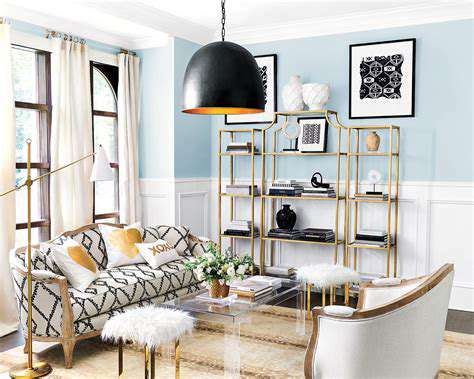
Soft Focus for Visual Interest
In design as in photography, strategic focus directs attention. A single spectacular textile piece - perhaps an heirloom quilt or artisan-woven throw - deserves center stage, with supporting pieces playing backup. This hierarchy creates visual rest stops that guide the eye comfortably through a space.
Understanding Depth of Field
Apply photographic principles to interiors by creating foreground, midground and background layers. A striking velvet sofa (foreground) might be balanced by textured walls (midground) and window treatments (background). This dimensional approach prevents flat, uninteresting spaces while allowing focal points to shine.
Choosing the Right Lens
Just as photographers select lenses for specific effects, designers choose furnishings to shape spatial perception. Low-profile furniture makes ceilings appear higher, while substantial pieces ground voluminous rooms. Scale perception dramatically affects how we experience spaces - the right lens makes all the difference.
Composition and Subject Placement
The rule of thirds applies beautifully to interior composition. Instead of centering every element, try offsetting key pieces at one-third points for more dynamic arrangements. This principle works equally well for furniture placement and accessory grouping, creating balanced yet interesting spaces.
Post-Processing Techniques
Like photo editing, room styling benefits from final tweaks. Step back periodically to assess overall balance. Sometimes removing one piece creates more impact than adding another. Edit ruthlessly until every element earns its place - the most powerful designs often stem from restraint rather than excess.
